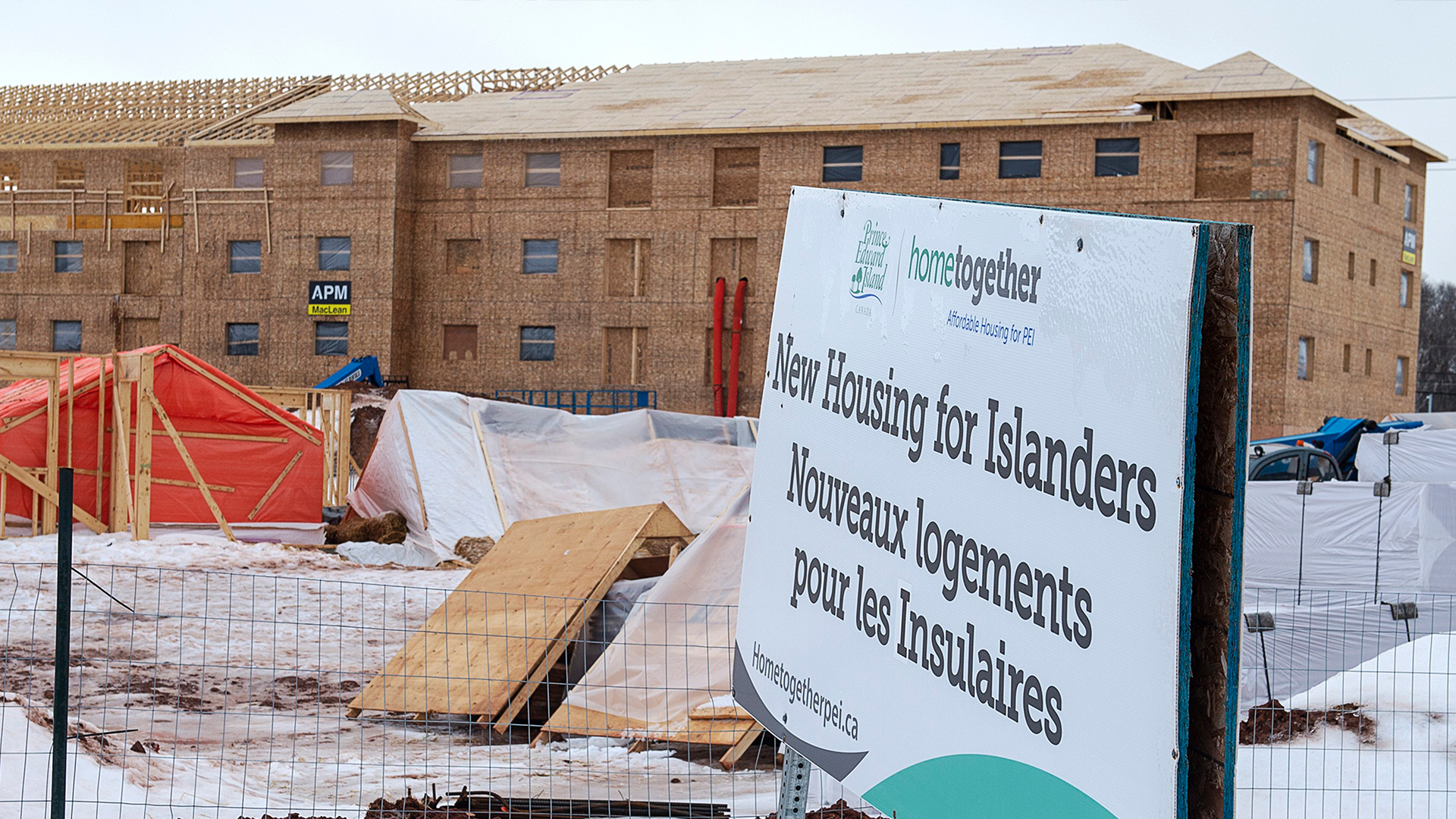
From the mid-1960s to the mid-1980s, between 10 and 25 per cent of new housing construction in Canada was non-market: 20,000 to 40,000 public, community and co-op homes a year.
But since 1992 when the federal government downloaded responsibility for social housing policy to the provinces, only 50,000 net non-market homes have been produced, given the loss of 183,019 low-cost homes due to the end of ongoing housing subsidies from the federal government.
A reliance on private-market supply has not met the need for low- and moderate-income housing over the past three decades. Despite the use of direct subsidies and measures such as inclusionary zoning, which requires new residential developments to include affordable units, there is a huge accumulated housing deficit, particularly units affordable for Canadians with the lowest incomes.
As a starting point, researchers with the Housing Assessment Resource Tools (HART) project at the University of British Columbia suggest a goal of six million new homes be built in the next decade, with at least one million of these being non-market, doubling the current stock.
Using a new toolkit of housing assessment resources, HART’S analysis shows that in 2021 across Canada, the maximum affordable monthly housing cost for low-income households was $1,050, whether it was for a single person or a larger family. Very low-income households can afford a monthly maximum of only $420.
We suggest there is a need for four million new or acquired homes that are affordable to very low and low-income households in the next decade. Moderate- and median-income households need a further two million affordable homes.
This projected need is calculated by adding up “official” housing need, which is based on private households but excludes students and those in collective housing.
We have also added estimates of the housing need for those who are excluded from that definition, such as the homeless, those in congregate housing such as group homes and long-term care, students and those who are living with roommates or parents, or “driving until they qualify” because of affordability concerns. We then add population projections, based on continuing high levels of immigration.
Federal National Housing Strategy programs have thus far largely failed to address targets related to chronic homelessness and housing need. The significant exception is the Rapid Housing Initiative, which has not only provided low-cost housing to those who need it most but has also stimulated advancements in modular housing. That can address two of the causes of declining supply: labour shortages and construction costs.
In an era of increasing homelessness and decreasing affordability, the federal government is investigating options for scaling up the stock of non-market housing, both new builds and acquisitions.
In doing so, it is following the lead of countries such as Germany, which recently moved from a long-term (1992-2022) policy of selling non-market housing assets) to federally funded targets of 25 per cent of all new builds being social housing: 100,000 homes a year. The Canadian equivalent would be 48,000.
There are five ways to finance social and affordable housing. In order of effectiveness, these are:
1. Land policy, whether it is the land banking that underpinned the one million affordable Victory Houses created by the CMHC from 1946 to 1960, or France requiring 25 per cent of homes in all municipalities to be non-market, with about 100,000 new social homes a year between 2000-19. The Canadian equivalent would be 65,000 a year.
2. Capital investment, to cover housing costs, especially when linked to a specific policy objective, such as ending homelessness in Finland, which has built a steady 7,000 to 9,000 social and supportive homes a year over the past two decades. The Canadian equivalent would be 60,000 to 65,000 annually.
3. Debt financing, with long-term below-market secured financing (41 years in Finland, 35 years in France), usually through a national infrastructure bank (ARA in Finland, CDC in France), with repayments leading to revolving financing, as is the case in Denmark.
4. Tax incentives, linked to social or affordable housing outcomes, as has been the case previously in Canada, and is a part of Austria’s system, which produces about 17,000 social homes a year. The Canadian equivalent would be 72,000 a year.
5. Operating subsidies, either through housing benefits to tenants or directly to providers.
Where recent proposals point
Numerous recent proposals to double Canada’s production of social homes through new builds and acquisition have emphasized several options:
Leveraging government and non-profit land assets, moving toward leasing rather than market sale of not only “surplus” but under-utilized land (e.g. housing “on top” of post offices and other government buildings).
This will require changes to the terms of reference for agencies at all levels of government – from the Canada Lands Company to provincial transit providers and school boards – to substitute a notion of “social return on investment” instead of the highest profit from sales of land.
It will also require much more transparent information on land ownership, which would allow strategic public land purchases as well as merging adjacent land holdings of different levels of government.
There are several proposals related to public developers using new or repurposed government agencies, which could provide median and possibly even moderate-income affordability. However, even in the case of direct non-market provision, there is still the need to provide either capital grants or housing benefits to subsidize very low and low-income households.
Why bricks and mortar alone won’t solve the housing crisis
Let’s stop calling it a housing crisis
Ottawa picked the dicey road to lower rents; Quebec is right not to follow
Yänonhchia’ would draw on First Nations’ proud history of sustainable housing
There is no substitute for long-term, low-rate financing, which was the motor behind Canada’s social housing production in the 1970s and 1980s. Having that financing secured in a revolving fund, as is the case in Denmark and Austria, is a sustainable way to ensure ongoing support for social housing stock.
Finally, this financing option needs to be backed up by co-ordinated policy coming from all three levels of government, led by Ottawa. It should involve income-based targets for both provinces and municipalities linked to infrastructure funding, which in turn requires consistent need assessment. It should also have one definition of affordability reflected in all programs and it needs a partnership approach that involves land from all levels of government.
The partnership could include direct capital investment and financing from the federal government along with social and health services for supportive housing from provincial governments as well as renter protections and welfare rate increases (or large operating subsidies to make up the gap between incomes and housing costs). It could also include upzoning and as-of-right approvals from municipalities, as well as property taxes and development fees waivers.
The solution is direct financing for non-market housing
Doubling the stock of non-market homes from a little under one million in the next decade won’t address four decades of failure to address low-income housing need. That will require a combination of higher incomes (through higher welfare payments and higher minimum wages, or universal basic income), rent regulation and a long-term affordable-housing infrastructure strategy.
But international evidence suggests that direct financing to scale up non-market housing is the most efficient and effective way to address the increasing affordable housing and homelessness crisis.










